First Ascent: Alison Levine Reaches Antarctic Summit
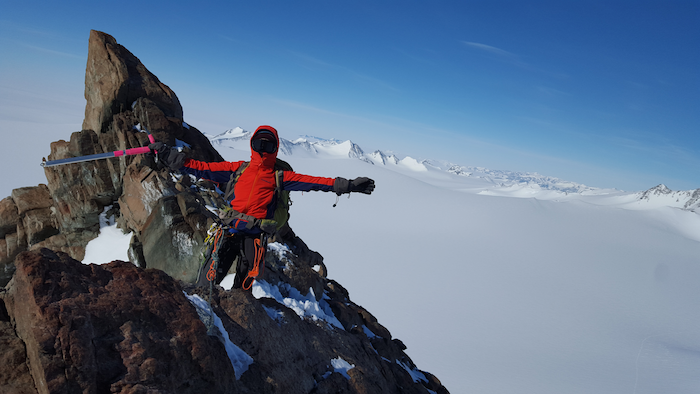
When mountaineer Alison Levine and six teammates made a first ascent of Hall Peak–a 7,116-foot Antarctic peak that rests in Larsen Valley, one of the most dangerous sections of the icy continent–they put back some scotch. Regardless of the extremely harsh conditions, after close to 10 hours and 5,000 vertical feet of relentless climbing, Levine and her crew reached the summit, on January 6, 2016. It was time to celebrate life. Levine’s good friend and teammate, Chris Haver, was turning 50 years old, after all.
Full of jaw-dropping inspiration, Levine has earned the Adventure Grand Slam by climbing the highest peak on each continent and skiing to both the North and South Poles. She also served as team captain of the first American Women’s Everest Expedition (which did not summit due to poor conditions). Levine also made history as the first American to complete a 600-mile traverse from west Antarctica to the South Pole following the route of legendary explorer Reinhold Messner. Her success is even more astounding in light that she’s endured three heart surgeries and suffers from Raynaud’s disease.
Here, we check in with Levine to learn more about her most recent summit of Hall Peak.
What were the weather conditions like the day you summited?
The conditions were about as good as it gets for Antarctica, given that the average temperature is about negative 50 degrees Fahrenheit and Antarctica is the coldest, windiest place on earth. For the most part, it was fairly calm but cold, cold, cold. And the wind kicked up at times.
We definitely timed the trip right. The next day, the weather was a lot more severe. We set out in the morning to try to explore some other peaks in the area, but retreated fairly quickly because the winds picked up and the clouds closed in and the visibility went to shit.
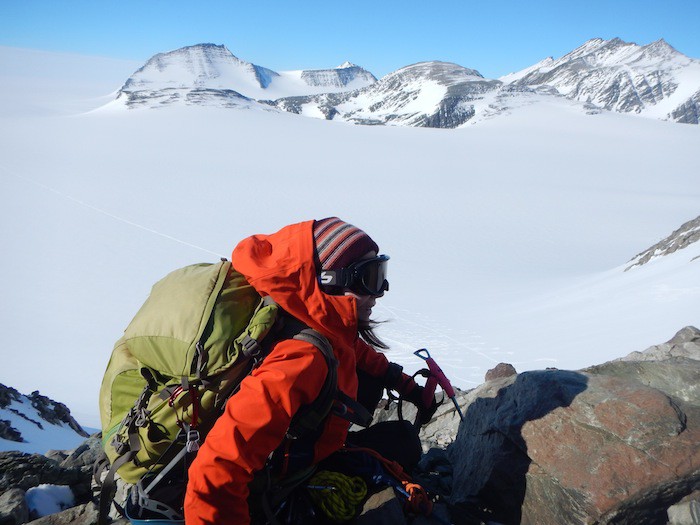
What inspired you to climb this peak?
It wasn’t a what–it was a who. My friend Chris Haver (whom I have known since we were twelve years old. We grew up together in Phoenix) came up with the idea to do a first ascent to celebrate his fiftieth birthday. Because, you know, fifty is the new crazy. Chris has an extensive background in ski mountaineering (he has skied Everest, Denali, and a lot of other big peaks) and figured this would be something completely different. The whole thing was his brainchild.
Chris invited a bunch of his buddies on the trip, in July 2014, in order to give everyone ample time to plan. I am sure most of them thought it sounded like a brilliant idea at the time. Of course, as the date crept closer, many of them were unable to go (kids, jobs, other responsibilities, spousal disapproval, etc.). Since there was an open spot on the trip, I got the lucky invite.
In a tweet, you described the climb as being chock-full of “steep, cold, rocks, and ice snow.” Does that sum up the terrain?
That pretty much nails it. I think there was more loose rock than we anticipated. And, when you are thousands of feet up and are in crampons, loose rock can be intimidating.
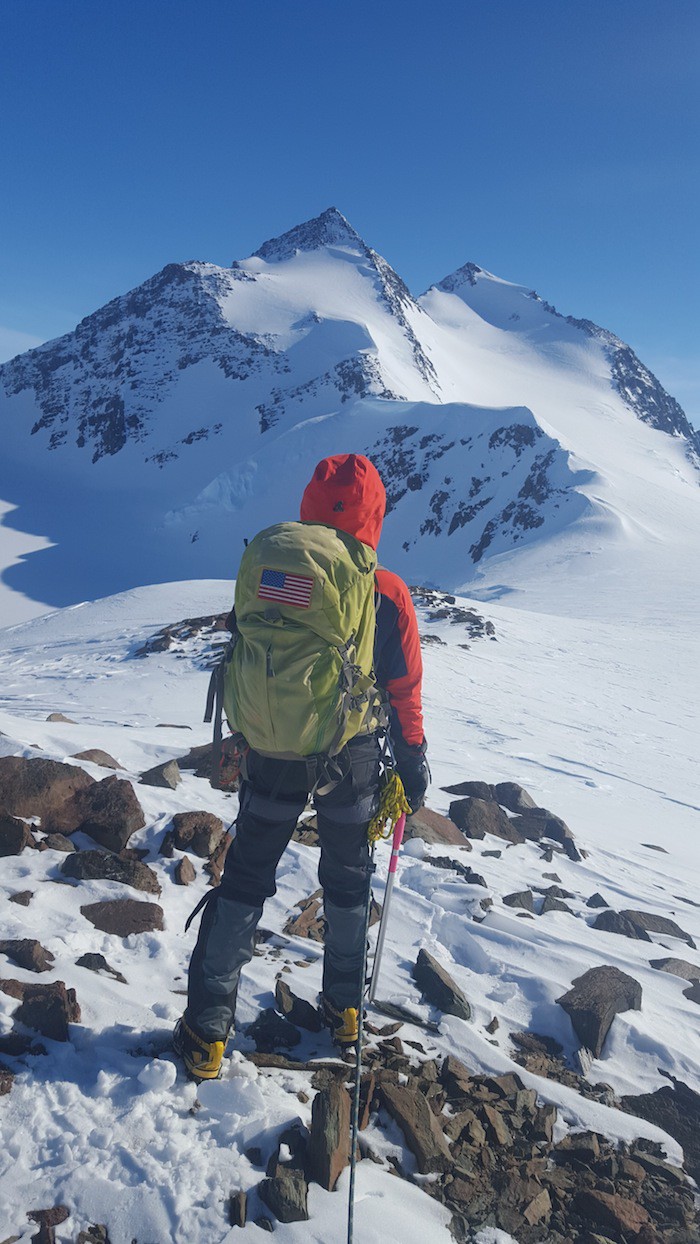
Why are expeditions in the Larson Valley region more dangerous than in other areas of Antarctica?
It’s just so damn remote. On top of the extreme weather, there is literally nothing there. You are so far away from any kind of help. And when you are climbing peaks that have never been climbed, there is no 411 on the routes. The Vinson Massif is the most popular climb [in Antarctica], so there are plenty of people around and a base camp that is well-manned throughout the climbing season.
How did you feel before and after the climb?
I remember feeling that no matter what happened, I was just so happy to be there in the first place. Antarctica is a place that very few adventurers ever get to, so to have an opportunity to go back a third time, and to do something that was completely new for all of us, was really a special experience. Was it more technically challenging than I anticipated? Yes. But, because we were not dealing with a super high mountain (keep in mind that the Vinson Massif is the highest peak on the continent at just over 16,000 feet, so there isn’t anything insanely high there), I knew we didn’t have to really worry too much about altitude sickness. It’s more about the cold and the ice.
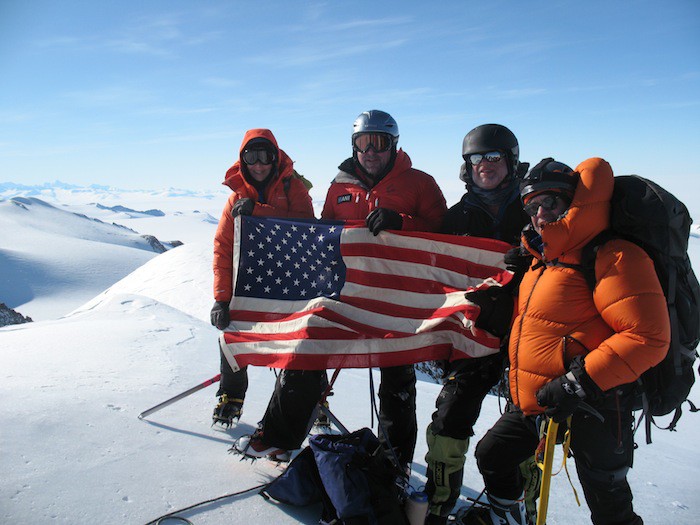
Who were your teammates?
My teammates were Chris and his friends, who could not be more different from one another. Yet, everyone really gelled and the team dynamics were as good as it gets. Everyone was supportive, helped one another and was courteous. I would do another trip with any of these guys, anytime.
What were the most inspiring and challenging experiences when you climbed Hall Peak?
The most inspiring experience was watching my teammates really work together to ensure success. Everyone wanted to get to the top as a team. You don’t always have that on expeditions. The most challenging part was the weather. When the wind kicked up it was just so damn cold. I have Raynaud’s disease, which makes dexterity an issue.
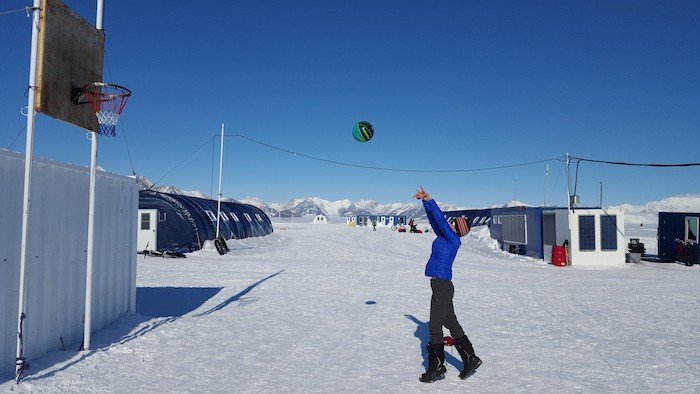
You’ve been to Antarctica on three expeditions. Why do you keep going back?
Antarctica is an absolutely magical place. It’s one of the few places you can go where you really feel like you are on a remote expedition. You almost feel the spirit of the early explorers that were the first to venture through that beautiful, yet deadly, continent. My favorite adventure stories are those of the early Antarctica explorers, so I don’t think I will ever feel like I have had enough of Antarctica. It’s a massive continent: 5.5 million square miles. There is plenty more of it that I want to see and explore.
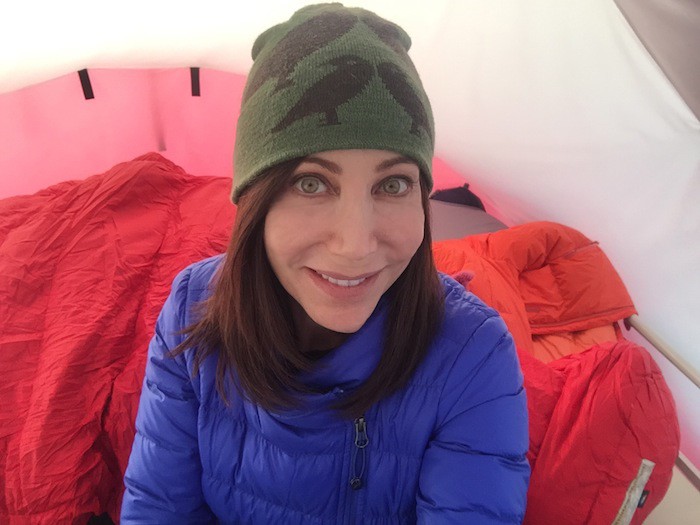
To learn more visit www.alisonlevine.com.


LET'S GET SOCIAL